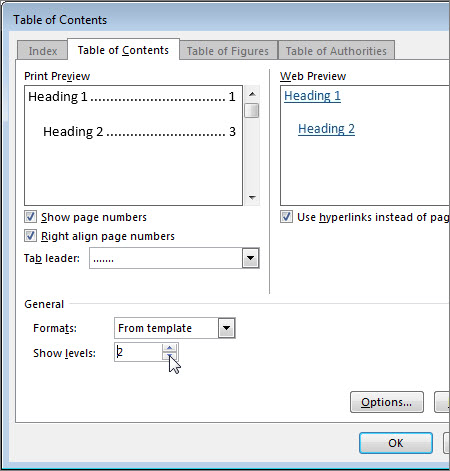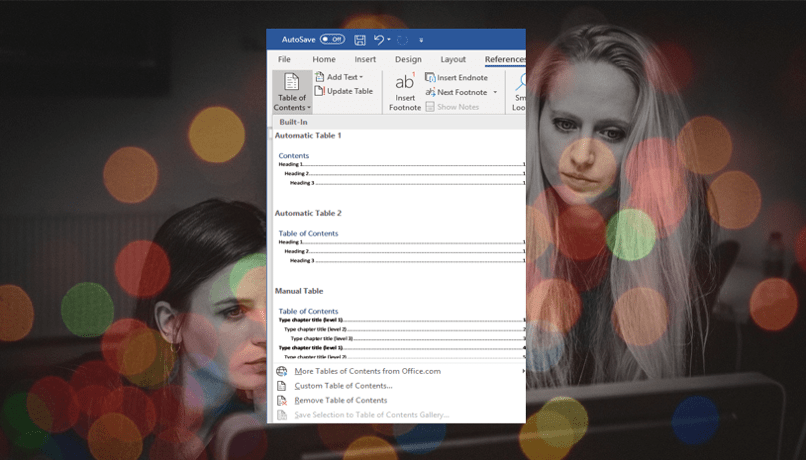
If you change what is within the definition of a style, then you've changed the formatting applied across all paragraphs or characters that use that style. You can't get away from them they are always there, even if you try to ignore them. Explicit formatting is done through the use of formatting commands, such as those found on the toolbars, in the menus, and in various dialog boxes.Īll default formatting in Word begins with styles. Implicit formatting, which is formatting done by "default," is implemented through the use of styles. In general, there are two types of formatting in Word: implicit and explicit.

#Word 2016 table of contents formatting after update how to
Every time she highlights a section of text and then changes the font or margin alignment, Word changes the whole document into that new font or margin.īefore explaining how to fix this, it is necessary to do a bit of a review about how formatting is handled in Word.

The only problem with this approach is that you will need to redo it every time the TOC is regenerated, as the explicit formatting is retransferred every time the TOC is created.Emily has a concern about how she keeps losing document formatting. This works because, again, the explicit formatting (which was transferred by Word) is removed and the underlying TOC styles show through. You should be able to remove any explicit formatting from the TOC itself by selecting the entire TOC and pressing Ctrl+Space Bar and Ctrl+Q. Your best bet at this point is to repeat this process with all the headings and then make any changes to the heading styles to reflect how you want the headings to really appear.īecause Word transfers explicit formatting from the headings to the TOC entries, this brings up something else you can do, if you'd like. If, after pressing these two shortcut keys, the heading looks different than it did before, then there was explicit formatting applied that would carry over and affect any TOC that relies on that heading. The first shortcut returns the paragraph to the underlying character formatting as defined in the style and the second shortcut returns the paragraph to the underlying paragraph formatting defined in the style. One way to test if this is the problem is to select a heading in your document (the entire paragraph, including the paragraph mark at the end of the paragraph) and press Ctrl+Space Bar then Ctrl+Q. Thus, if you have a heading for which the style is 14-point regular text, and someone selects the heading and changes the formatting (making it bold, changing the point size, etc.), then the explicit formatting is carried over to the TOC entry, overriding whatever the TOC style says should be used. When a TOC is generated, any explicit formatting in the headings is carried over to the TOC, as explicit formatting. The problem could be with the headings in the document.

It is important to keep in mind that the problem may not necessarily be with the TOC styles. Linda wonders how she can modify the TOC styles so that the numbers and the text are both not bold.

However, Word still shows the numbers in the TOC (the automatic numbers pulled from the headings, not the page numbers) in bold. Linda thinks the table of contents looks better when it's not in bold text, so she modified the TOC styles so they weren't bold. When she generates a table of contents from these headings, the numbers and text are always bold. Linda has a document which uses built-in heading styles that she's modified to use automatic numbering.


 0 kommentar(er)
0 kommentar(er)
